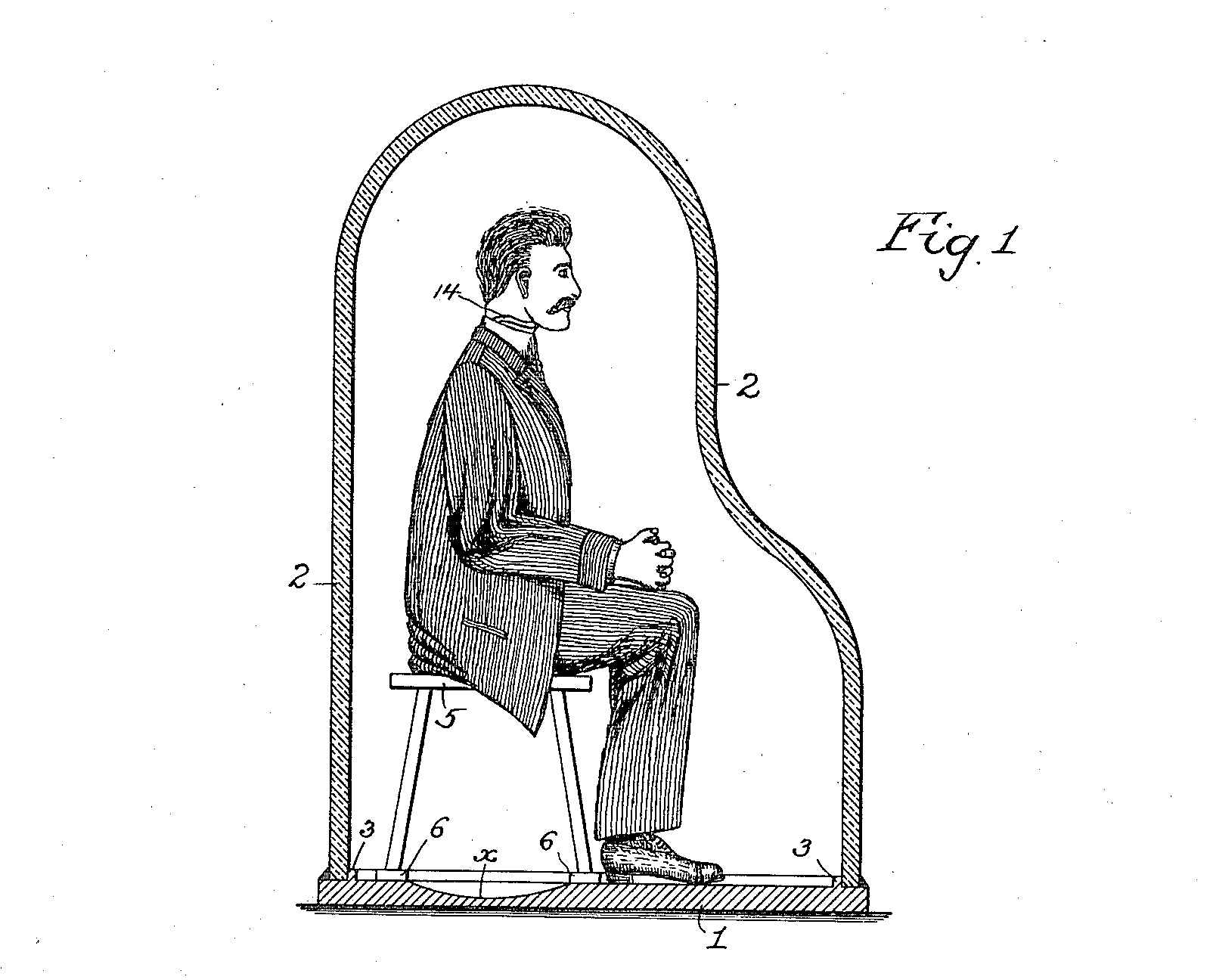
Not-So-Great Moments in the History of Philadelphia Inventions
Swill-0′-the-Wisp. Louis T. Pyott’s “Improved Combined Wisp and Flask,” patented in 1871, had a half-pint capacity, but heavy drinkers might have
chosen his “fifth” model. The flask never was marketed widely, but Pyott probably cleaned up with his invention.
I Couldn’t Put It Down. Wesley H. Stroup received a patent in 1875 for an improvement in flasks (see above) ideal for the undercover tippler.
Tastes Better Than Plastic. In 1898, two unforgettable locals — Dismas Mugrauer and Peregrin Totzauer — patented eating utensils made of candy. “A great convenience is had, especially for picnic parties,” the inventors noted, “since the plate and spoon will not only form a distinctive feature, but when ice-cream or the like has been eaten therefrom, the plate itself will form part of the dessert and may be so flavored as to make it exceedingly palatable. ” (Bassett’s, take note.)
Call for Philip Mo-o-o-rris. In 1904, long before Philadelphians had Bics to flick, James Waters and Frederick V. Thompson came up with an electric wall cigar lighter that looked much like a telephone. The telephone was, however, a better idea.
Death, Where Is Thy Sting? The only bad thing about cremation, at least in Isaac W. Heysinger’s view, was that it had to be done before burial. His invention. patented in 1883, was a mobile furnace that could he hooked up to coffins six feet under, long after the mourners had dispersed, to incinerate the contents “without disturbing the grave or revealing its secrets.” The advantage? “No violence is done to the feelings of affection of surviving friends or to the sacred memories hallowed by the custom of unnumbered ages, which gather about the loved one’s grave. . . .”
You Won’t Sit Still for This One. Twenty-seven years after Heysinger’s invention, Angelo Raffaelo Lerro, a “subject of the King of Italy” residing in Philadelphia, decided he wasn’t going to take death lying down. So in 1910 he patented certain improvements — or so he thought — in burial caskets. “I provide a casket,” he wrote, “which is practically indestructible, is hermetically sealed, provides for the disposal of the body in a natural posture, and is transparent in order to permit a full view of the body between the time of death and ultimate interment.”
The Umpire Strikes Back. If you’ve ever booed an umpire’s call, you’ll be pleased to know that Charles H. Capp’s invention went the way of Sunday double headers. In 1947, Capp patented a method for rigging an umpire’s mask with a microphone and connecting it to the stadium’s public-address system. The apparatus could be actuated by stepping on metal terminal behind home plate.
“My Next Project Is the Recliner/Air Conditioner.” Philadelphia’s searing summer heat literally drove one of the city’s inventors off his rocker. In 1866, George Fleig received a patent for his “Improved Combined Rocking-Chair and Revolving Fan,” putting him more than half a century ahead of beauty-salon hair dryers.
Roll Out the Barrels. Back in World War I, Jones Wister’s muzzle attachment for a rifle — shaped like a piece of elbow macaroni — was designed to drastically reduce combat casualties. “It can be used in a trench with the aid of a periscope,” Wister noted, “without exposing the soldier to the fire of the enemy.” But the U.S. Army never used the revolutionary rifle; perhaps Wister accidentally shot himself in the foot while demonstrating it.
Main Story: Build a Better Mousetrap
Sidebar: Got Any Ideas?
This article, by Alan Green and Bill Hogan, originally appeared in the March 1982 issue of Philadelphia magazine.

